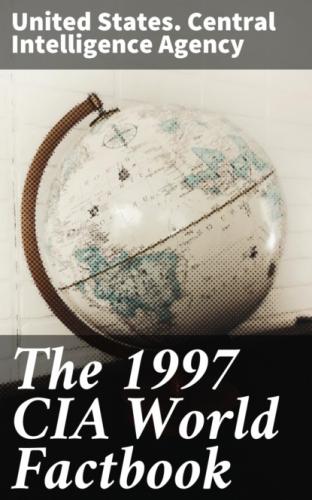Flag description: two equal horizontal bands of red (top) and green with a yellow five-pointed star in the center; uses the popular pan-African colors of Ethiopia
Economy
Economy - overview: One of the poorest countries in the world, landlocked Burkina Faso has a high population density and a high population growth rate, few natural resources, and a fragile soil. Over 80% of the population is engaged in subsistence agriculture which is highly vulnerable to variations in rainfall. Industry remains dominated by unprofitable government-controlled corporations. Following the African franc currency devaluation in January 1994 the government updated its development program in conjunction with international agencies, and exports and economic growth have increased.
GDP: purchasing power parity - $8 billion (1996 est.)
GDP - real growth rate: 5.4% (1996 est.)
GDP - per capita: purchasing power parity - $740 (1996 est.)
GDP - composition by sector: agriculture: 31% industry: 25% services: 44% (1994 est.)
Inflation rate - consumer price index: 7.8% (1995)
Labor force: NA (most adults are employed in subsistence agriculture) by occupation: agriculture 80%, industry 15%, commerce, services, and government 5% note: 20% of male labor force migrates annually to neighboring countries for seasonal employment (1984)
Unemployment rate: NA%
Budget: revenues: $483 million expenditures : $548 million, including capital expenditures of $189 million (1992)
Industries: cotton lint, beverages, agricultural processing, soap, cigarettes, textiles, gold
Industrial production growth rate: 1% (1994)
Electricity - capacity: 121,000 kW (1991)
Electricity - production: 320 million kWh (1991)
Electricity - consumption per capita: 28 kWh (1992 est.)
Agriculture - products: peanuts, shea nuts, sesame, cotton, sorghum, millet, corn, rice; livestock
Exports: total value : $298 million (f.o.b., 1995 est.) commodities: cotton, gold, animal products partners: Cote d'Ivoire, France, Italy, Thailand
Imports: total value: $500 million (f.o.b., 1995 est.) commodities : machinery, food products, petroleum partners: Cote d'Ivoire, France, Togo, Nigeria
Debt - external: $1.1 billion (December 1994 est.)
Economic aid: recipient: ODA, $NA
Currency: 1 Communaute Financiere Africaine franc (CFAF) = 100 centimes
Exchange rates: CFA francs (CFAF) per US$1 - 541.69 (January 1997), 511.55 (1996), 499.15 (1995), 555.20 (1994), 283.16 (1993), 264.69 (1992) note: beginning 12 January 1994 the CFA franc was devalued to CFAF 100 per French franc from CFAF 50 at which it had been fixed since 1948
Fiscal year: calendar year
@Burkina Faso:Communications
Telephones: 21,000 (1993 est.)
Telephone system: all services only fair domestic: microwave radio relay, open wire, and radiotelephone communication stations international : satellite earth station - 1 Intelsat (Atlantic Ocean)
Radio broadcast stations: AM 2, FM 1, shortwave 0
Radios: NA
Television broadcast stations: 2 (1987 est.)
Televisions: 49,000 (1991 est.)
@Burkina Faso:Transportation
Railways: total: 622 km (517 km from Ouagadougou to the Cote d'Ivoire border and 105 km from Ouagadougou to Kaya) narrow gauge: 622 km 1.000-m gauge (1995 est.)
Highways: total: 12,506 km paved : 2,001 km unpaved: 10,505 km (1995 est.)
Ports and harbors: none
Airports: 22 (1996 est.)
Airports - with paved runways: total: 10 over 3,047 m : 1 2,438 to 3,047 m: 1 under 914 m: 8 (1996 est.)
Airports - with unpaved runways: total: 12 1,524 to 2,437 m: 3 914 to 1,523 m: 9 (1996 est.)
Military
Military branches: Army, Air Force, National Gendarmerie, National
Police, People's Militia
Military manpower - availability: males age 15–49: 2,219,544 (1997 est.)
Military manpower - fit for military service: males: 1,137,882 (1997 est.)
Military expenditures - dollar figure: $104 million (1994)
Military expenditures - percent of GDP: 6.4% (1994)
Transnational Issues
Disputes - international: none ______________________________________________________________________
BURMA
@Burma:Geography
Location: Southeastern Asia, bordering the Andaman Sea and the Bay of
Bengal, between Bangladesh and Thailand
Geographic coordinates: 22 00 N, 98 00 E
Map references: Southeast Asia
Area: total : 678,500 sq km land: 657,740 sq km water: 20,760 sq km
Area - comparative: slightly smaller than Texas
Land boundaries:
total: 5,876 km
border countries: Bangladesh 193 km, China 2,185 km, India 1,463 km,
Laos 235 km, Thailand 1,800 km
Coastline: 1,930 km
Maritime claims: contiguous zone: 24 nm continental shelf: 200 nm or to the edge of the continental margin exclusive economic zone : 200 nm territorial sea: 12 nm
Climate: tropical monsoon; cloudy, rainy, hot, humid summers (southwest monsoon, June to September); less cloudy, scant rainfall, mild temperatures, lower humidity during winter (northeast monsoon, December to April)
Terrain: central lowlands ringed by steep, rugged highlands
Elevation extremes: lowest point: Andaman Sea 0 m highest point : Hkakabo Razi 5,881 m
Natural resources: petroleum, timber, tin, antimony, zinc, copper, tungsten, lead, coal, some marble, limestone, precious stones, natural gas
Land use: arable land : 15% permanent crops: 1% permanent pastures: 1% forests and woodland: 49% other: 34% (1993 est.)
Irrigated land: 10,680 sq km (1993 est.)
Natural hazards: destructive earthquakes and cyclones; flooding and landslides common during rainy season (June to September); periodic droughts
Environment - current issues: deforestation; industrial pollution of air, soil, and water; inadequate sanitation and water treatment contribute to disease
Environment - international agreements: party to: Biodiversity, Climate Change, Law of the Sea, Nuclear Test Ban, Ozone Layer Protection, Ship Pollution, Tropical Timber 83, Tropical Timber 94 signed, but not ratified: none of the selected agreements
Geography - note: strategic location near major Indian Ocean shipping lanes
@Burma:People
Population: 46,821,943 (July 1997 est.)
Age structure: 0–14 years: 37% (male 8,743,108; female 8,410,224) 15–64 years: 59% (male 13,878,541; female 13,859,783) 65 years and over : 4% (male 873,670; female 1,056,617) (July 1997 est.)
Population growth rate: 1.81% (1997 est.)
Birth
